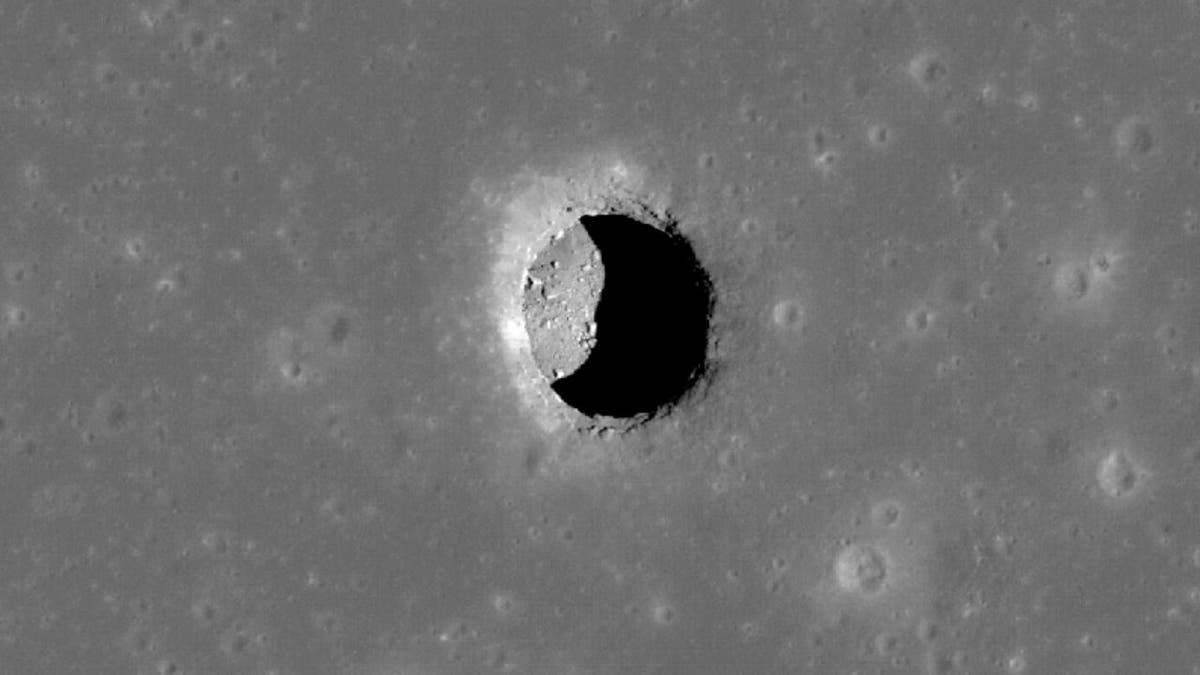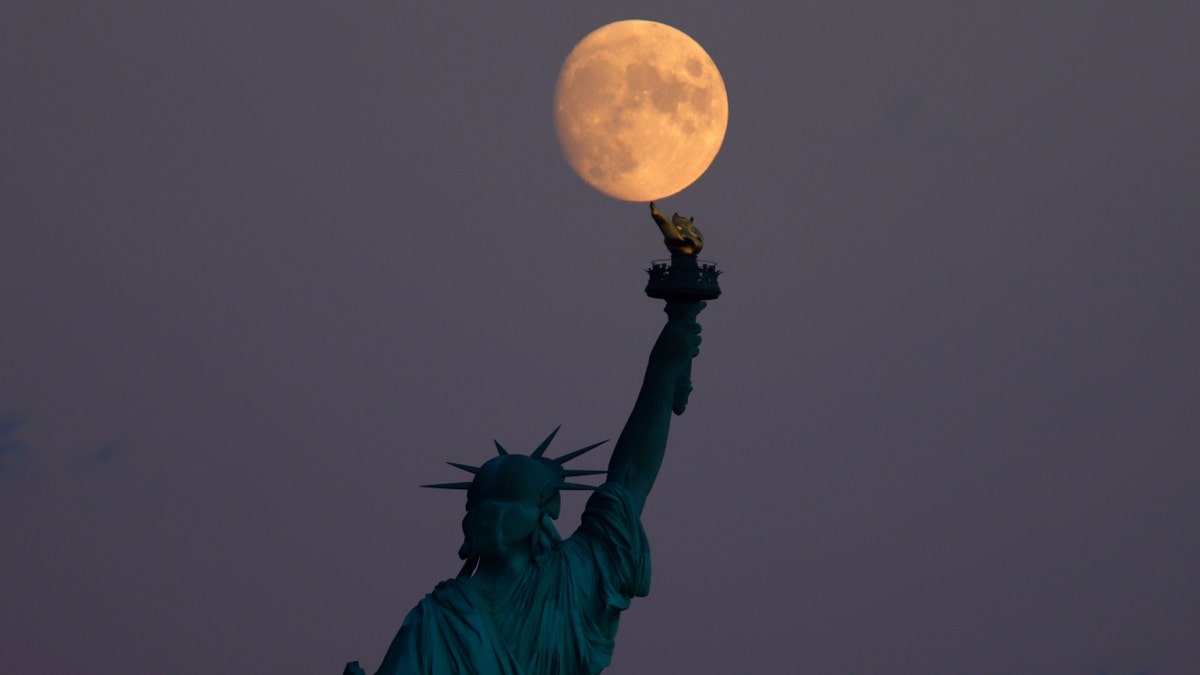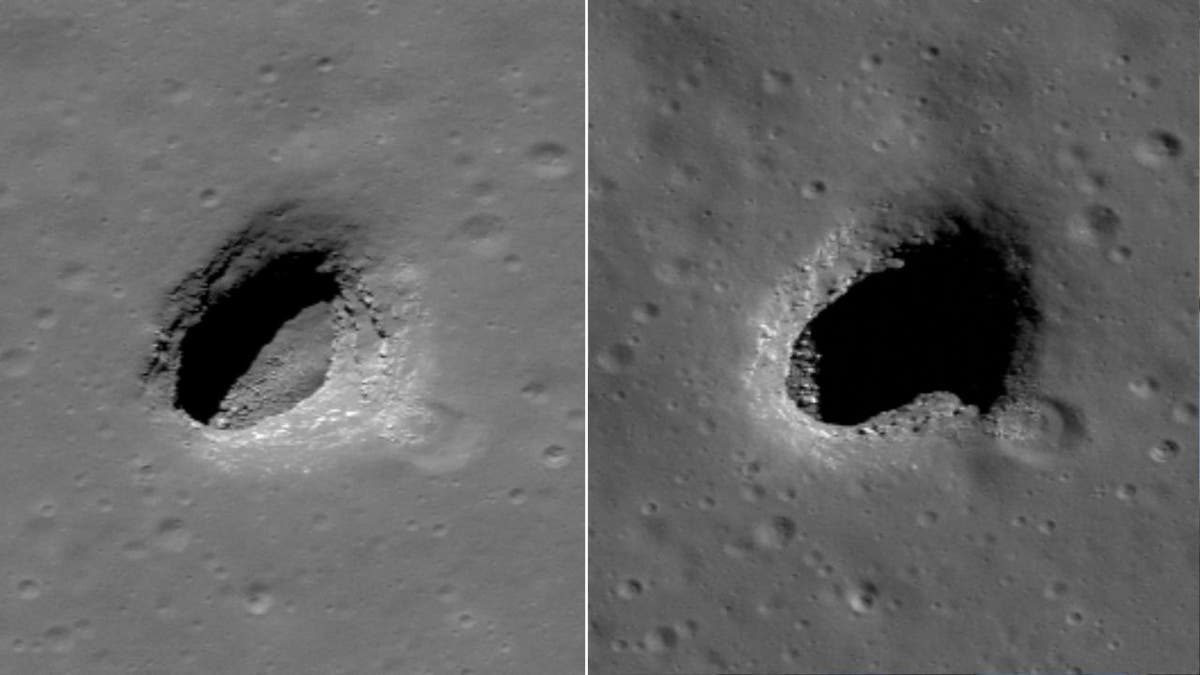An Italian-led team of scientists say they have confirmed evidence of a sizable cave on the moon not far from where Neil Armstrong and Buzz Aldrin landed 55 years ago.
The cave is located at the Sea of Tranquility just 250 miles from Apollo 11’s landing site and researchers suspect there are hundreds more that could house future astronauts as several nations look to create a permanent base on the lunar surface for humans. Apollo 17 in 1972 was the final flight of the Apollo program.
The pit, like the more than 200 others discovered up there, was created by the collapse of a lava tube, scientists say.
CHINA LAUNCHES LUNAR PROBE TO TAKE SAMPLES FROM FAR SIDE OF THE MOON

Mare Tranquillitatis pit crater, where the cave was discovered, is about 330 feet deep. (NASA/GSFC/Arizona State University)
Researchers analyzed radar images of the Mare Tranquillitatis pit (MTP), an elliptical skylight with vertical or overhanging walls and a sloping pit floor that seems to extend further underground. The radar images were captured by NASA’s Lunar Reconnaissance Orbiter in 2010 and compared the results with lava tubes on Earth.
“We find that a portion of the radar reflections originating from the MTP can be attributed to a subsurface cave conduit tens of metres long, suggesting that the MTP leads to an accessible cave conduit beneath the Moon’s surface,” and abstract from the study reads.
“This discovery suggests that the MTP is a promising site for a lunar base, as it offers shelter from the harsh surface environment and could support long-term human exploration of the moon.”
The radar data reveals only the initial part of the underground cavity, according to the scientists. They estimate it’s at least 130 feet wide and tens of yards long, probably more and is accessible from MTP, the deepest known pit on the moon which is about 330 feet deep, according to NASA.
“Lunar caves have remained a mystery for over 50 years. So it was exciting to be able to finally prove the existence” of one, Leonardo Carrer and Lorenzo Bruzzone of the University of Trento, wrote in an email to the Associated Press.
Most of the pits seem to be located in the moon’s ancient lava plains, according to the scientists. There also could be some at the moon’s South Pole, the planned location of NASA’s astronaut landings later this decade. Permanently shadowed craters there are believed to hold frozen water that could provide drinking water and rocket fuel.
During NASA’s Apollo program, 12 astronauts landed on the moon, beginning with Armstrong and Aldrin on July 20, 1969.
ON THIS DAY IN HISTORY, JUNE 18, 1983, ASTRONAUT SALLY RIDE BECOMES FIRST AMERICAN WOMAN IN SPACE

The moon rises behind the Statue of Liberty in New York City on September 18, 2021, as seen from Jersey City, New Jersey. (Gary Hershorn/Getty Images)
The findings suggest there could be hundreds of pits on the moon and thousands of lava tubes. Such places could serve as a natural shelter for astronauts, protecting them from cosmic rays and solar radiation as well as from micrometeorite strikes.
Building habitats from scratch would be more time-consuming and challenging, even when factoring in the potential need of reinforcing the cave walls to prevent a collapse, the team said.
Mahesh Anand, a professor of planetary science and exploration at the UK-based The Open University, told The Natioal News that a lunar habitat inside a cave would be less hostile than what astronauts would experience on the lunar surface.
“For example, there would less fluctuation in ambient temperature between lunar day and night and more protection from space radiation and micrometeorite impacts,” he told the outlet.
“However, getting access to 100 meter (330 foot) deep chute would be a challenge and would require innovative engineering solutions for establishing a sustainable habitat.”
CLICK HERE TO GET THE FOX NEWS APP

Two views of Mare Ingenii pit, another pit on the moon. Shadow measurements indicate that the Ingenii pit is about 230 feet deep. (NASA/GSFC/Arizona State University)
The U.S. aims to put a crew back on the lunar surface by the end of 2025 as part of a renewed commitment to crewed missions, aided by private sector players such as SpaceX and Blue Origin. They plan to land on the moon’s South Pole where permanently shadowed craters are believed to be packed with frozen water.
In February, the U.S. witnessed Intuitive Machines’ Odysseus lunar lander touching down near Malapert A in the South Pole region of the moon. It marked the first American spacecraft that has landed on the moon since the last crewed Apollo mission over 50 years ago.
